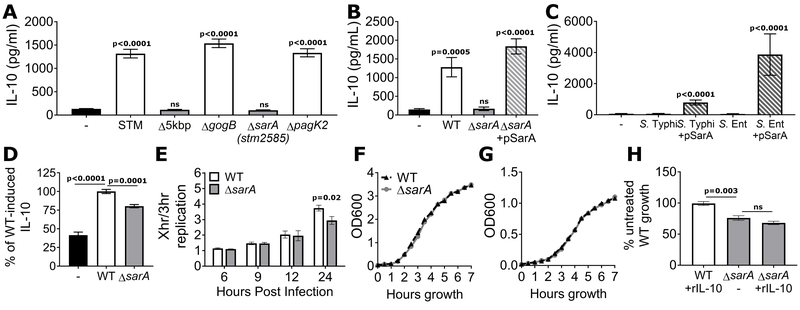Figure 2. sarA (stm2585) is required for induction of IL-10 and promotes intracellular replication.
a, sarA is necessary to induce IL-10. LCLs (GM19154) were infected with wild-type, the 4869bp deletion mutant (Δ5kbp), or individual deletion mutant S. Typhimurium. Δ5kbp and Δstm2585 were unable to induce IL-10. b, Complementation with pSarA restores IL-10 induction. LCLs were infected with wild-type, ΔsarA, or ΔsarA containing a plasmid with sarA expressed under its endogenous promoter (pSarA). c, SarA enables IL-10 induction by serovars naturally unable to induce IL-10. LCLs (GM19203) were infected with S. Typhi or S. Enteritidis wild-type or containing pSarA. d, SarA induces IL-10 in BJABs. Wild-type S. Typhimurium induced IL-10 and ΔsarA induced significantly less IL-10 in BJABs, controlled per infected cell and presented as percent of wild-type induced IL-10. e, ΔsarA has an intracellular growth defect. LCLs were infected with GFP-expressing wild-type or ΔsarA S. Typhimurium at MOI30 and the bacterial loads were measured by flow cytometry. Intracellular replication was measured as the ratio of increase over the median GFP intensity measured at 3 hours post infection. For a-e, graphs are from 6-9 biological replicates, measured in 3 separate experiments. f, SarA does not affect the growth rate of Salmonella alone either in rich media (LB) or g, SPI-2-inducing media (LPM). Means of 3 experiments shown. h, Decreased growth of ΔsarA is not due to its inability to induce IL-10. Addition of recombinant IL-10 did not rescue the intracellular growth defect of ΔsarA. P-values in Fig. 2a and 2c are from ANOVA with Sidak’s multiple comparison post-hoc test; all other p-values calculated using unpaired student’s t test; error bars represent SEM.

